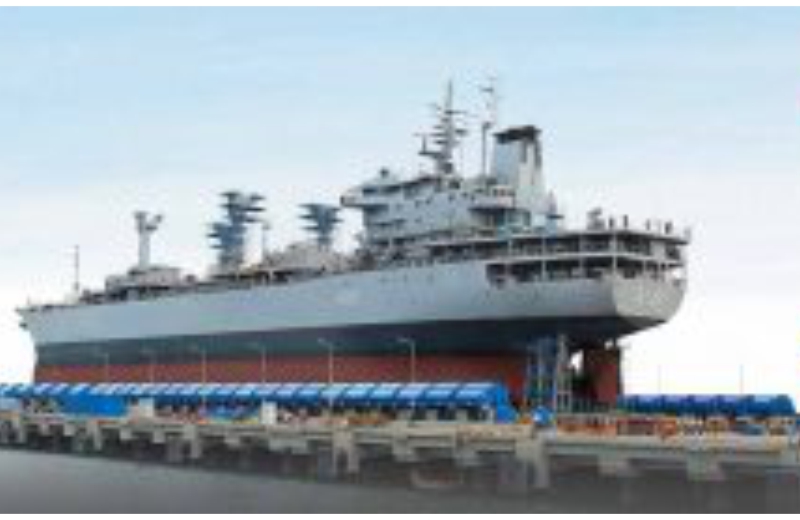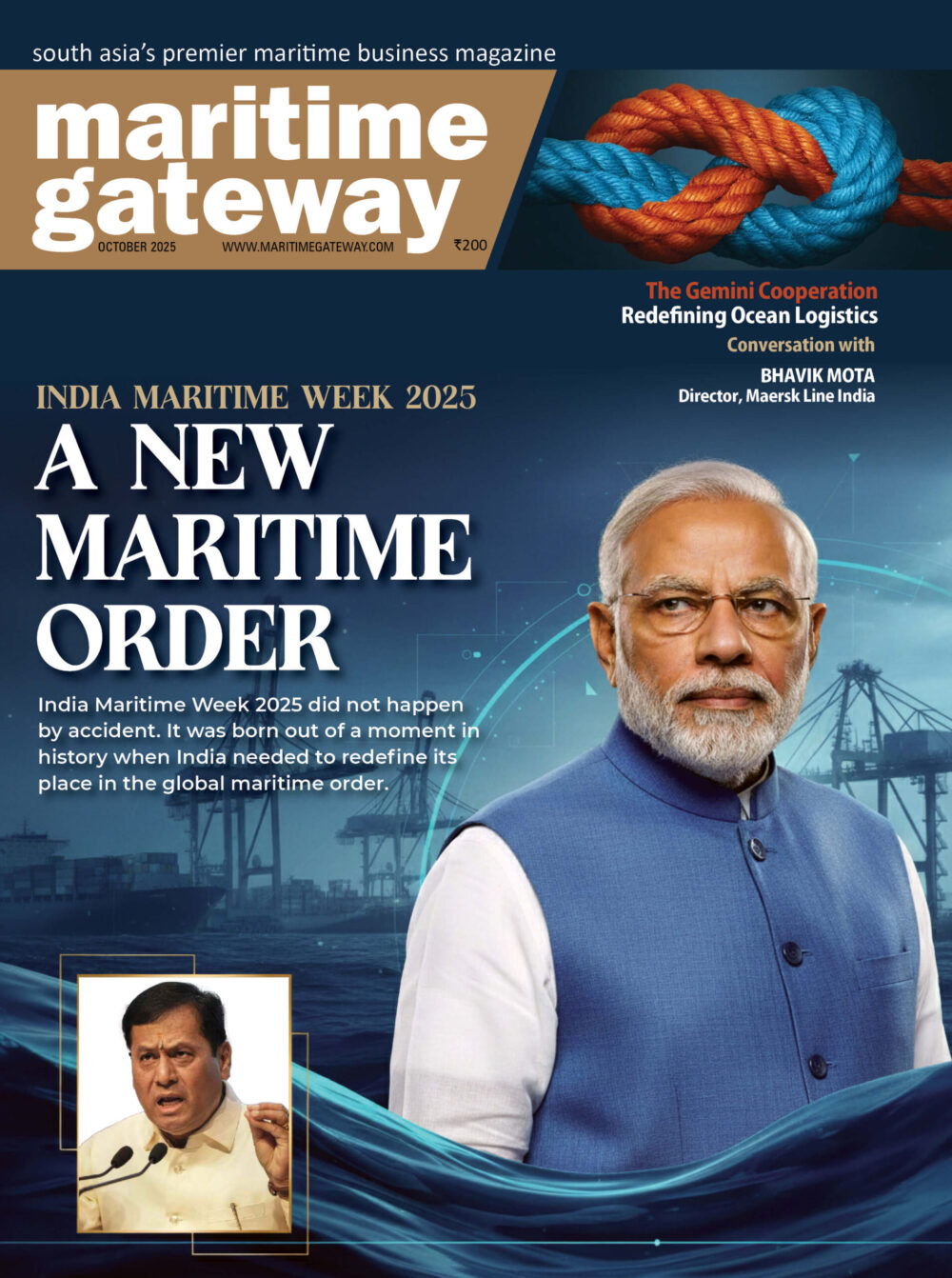[vc_row]
Larsen and Toubro Shipbuilding is consolidating all its resources at Kattupalli, Tamil Nadu investing its capital and wherewithal in strengthening India’s defence capabilities in the southern coastal town, B Kannan, Chief Executive Officer and Managing Director of L&T Shipbuilding told Maritime Gateway. With the Ministry of Defence opening up its production requirement market to private shipyards too, the firm sees the prospect of an escalation in defence orders from the government in the next few years.
Construction major L&T’s shipbuilding arm has two operational shipyards – one, at Kattupalli, about 40 km from Chennai, and the other, at Hazira in Gujarat offering comprehensive solutions from concept to design for new builds, as well as repair and retrofit for existing ones. Their offerings, till today, spanned both commercial and defence vessels but will henceforth focus only on the defence segment with India looking to invigorate its warship building as a key strategic area. At Kattupalli, the 700- acre shipyard is equipped with a large plate stockyard, a state-of-the-art yard with automatic blasting and priming line, plasma cutting machine and advanced hydraulic press including large assembly workshops with heavy material handling facility – all required to build every class of vessel except the aircraft carrier. The shiplift at Kattupalli has the capability to aid in the construction of a 20,000-dwt ship, considered amongst the heaviest of war vessels.
Currently, Katuppalli is designing and fitting together 54 interceptor boats, seven offshore patrol vessels for the coast guard and a floating dry dock for the Navy. “Of the current order, we have already delivered 28 of the boats and we are geared to handover the OPVs as per schedule too. The OPVs, however, will be inducted after the coast guard conducts sea trials,” said the shipyard’s Chief. The shipyard’s promptness in delivering vessels ordered comes with fusing design engineering aspects, planning, scheduling, production and manpower elements, all at one site that avoid cost and time overruns.
Having scored well on meeting domestic delivery schedules, L&T will now bid for international orders. The firm had recently won a $100-million order from Vietnam’s Border Guard for the design and construction of high speed patrol vessels. In keeping with the Government of India’s Make in India policy, complete design and engineering of these vessels are being undertaken at L&T’s dedicated Warship Design Centre with the vessels being built at Kattupalli. The firm envisages orders from other South Asian countries, Philippines, Thailand, Bangladesh and those along the African coasts. However, to execute international orders, L&T has to seek the approval of the Indian government even as they assess the ingenuity of the order.
The success of private shipyards in India bagging international orders is perhaps directly linked to the cost subsidy allowed to them which makes operations for Indian firms viable. The halting of the government subsidy in 2007 and the consequent financial downturn dragged the shipyards in to the red forcing them to suspend operations and roll back orders. “The cost saving on account of the subsidy can be as high as 20 per cent. This puts us in the league of international ship builders and makes our bids look competitive,” Kannan said. The Government of India has introduced a `4,000-crore Shipbuilding Financial Assistance Policy for a period of 10 years from 2016 to encourage domestic shipbuilding. Financial assistance will be granted to Indian shipyards equal to 20 per cent of the lower of “contract price” or the “fair price” of each vessel built by them for a period of at least 10 years commencing 2015-16. Maintaining that Indian shipyards will continue requiring financial assistance the official says that Korean and Chinese yards are better off because of integrating automation, digitisation, skill and technology. The lack of an institutionalised system in training people in shipbuilding skills, high cost of imported machinery coupled with currency fluctuations and the foreign firms having an enhanced asset and manpower productivity on account of computer automation leaves Indian yards wanting on many counts. Therefore, reducing the distance between designer and producer is a crucial factor in the rest of the factory line processes to keep with the schedule. “Working capital requirements will suffer if you do not achieve your milestones on time because at times working capital can equal almost 75 per cent of a year’s sales,” says Kannan.
And not many private shipyards have gotten the formula right to build defence or commercial ships. What makes it tick for Kattupalli is its balanced sourcing of material from Indian and multinational firms. Almost 70 per cent of all its material- steel, cables and pipes that are required to build the shell of the vessel- are all sourced from various firms within the country. Certain other equipment such as engines, generators, radars and weapon systems are sourced from far off locales. This mix of using most Indian material during the initial stages and importing only crucial equipment helps in populating all the required parts on time as the ship gets built.
L&T’s ability to execute these orders comes from its efforts to enhance asset and manpower productivity simultaneously bringing in modularity design digitization and production. For a capital intensive and engineering driven business like shipping, a firm would need to focus on knowledge consolidation in engineering and embrace technology and innovation to stay on top of the game. And, luckily, for the shipyard, belonging to a parent like Larsen and Toubro makes such investments customary.
With many other Indian firms such as the Mahindras, Tatas and Reliance coming in to the defence manufacturing fray, L&T Kannan, who has served the Navy for 40 years says the future augurs well for the shipbuilding industry. Private shipyards of the kind mentioned do have similar levels of capability and the industry could fulfill India’s requirements with greater cooperation from the establishment.
[/vc_column_text][/vc_row]









